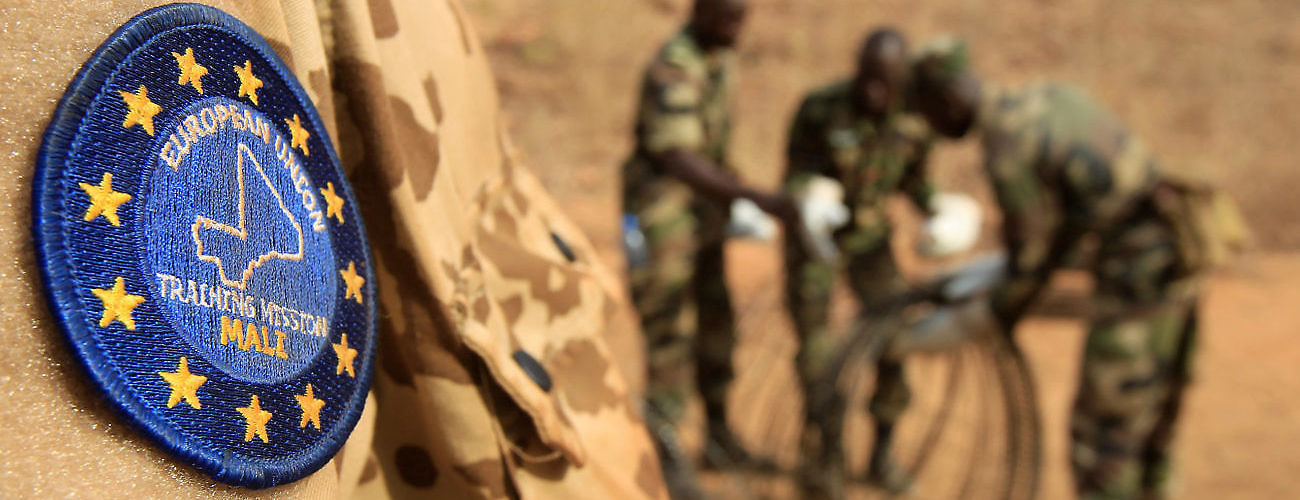German tank engineers from the Tank Engineers Company (Panzerpionierekompanie) 550 teach Malian soldiers how to construct a barricade as part of the EU Training Mission in Mali at the Koulikoro Training Center on April 30, 2013. (Bundeswehr/Andrea Bienert)
The protection of civilians (POC) in armed conflict has become a core strategic objective for the United Nations system and for UN peace operations in particular. The UN, however, is not the sole actor engaged in POC. The European Union (EU) and North Atlantic Treaty Organization (NATO), among other regional actors, have been developing their own policies and approaches to POC. While the significant overlap in these organizations’ member states and interorganizational developments create an opportunity to coordinate and synergize their POC policies, their approaches to POC differ—in some cases substantially.
As the EU and NATO are both in the process of reassessing their strategic direction against the backdrop of new conflict scenarios, there is a need to reflect on the differences and similarities between these three organizations’ approaches to POC, their comparative advantages, and the future direction of the POC agenda. At a time when international peace operations and protection efforts are under intense political and operational pressure, such an understanding could also lay the foundation for more informed and effective interorganizational cooperation on POC.
Toward this end, this paper examines the conceptualization of POC in the UN, the EU, and NATO, lays out the core POC policies and approaches of the three organizations and examines their approaches to implementing these policies in the field. The paper concludes with policy recommendations for the UN, the EU, and NATO to strengthen POC efforts within and between the three organizations:
- Adapt POC to new operational realities;
- Revitalize discussion on POC within and between the organizations;
- Improve POC training, preparedness, and institutionalization; and
- Focus on both passive (harm mitigation) and active approaches to POC.








